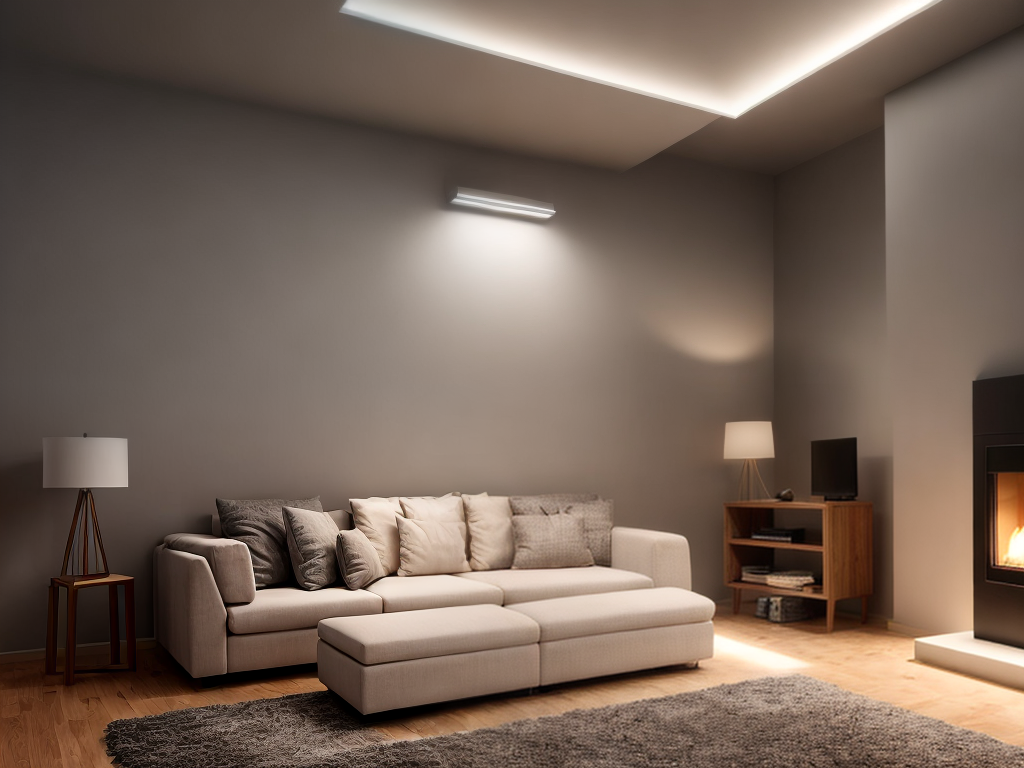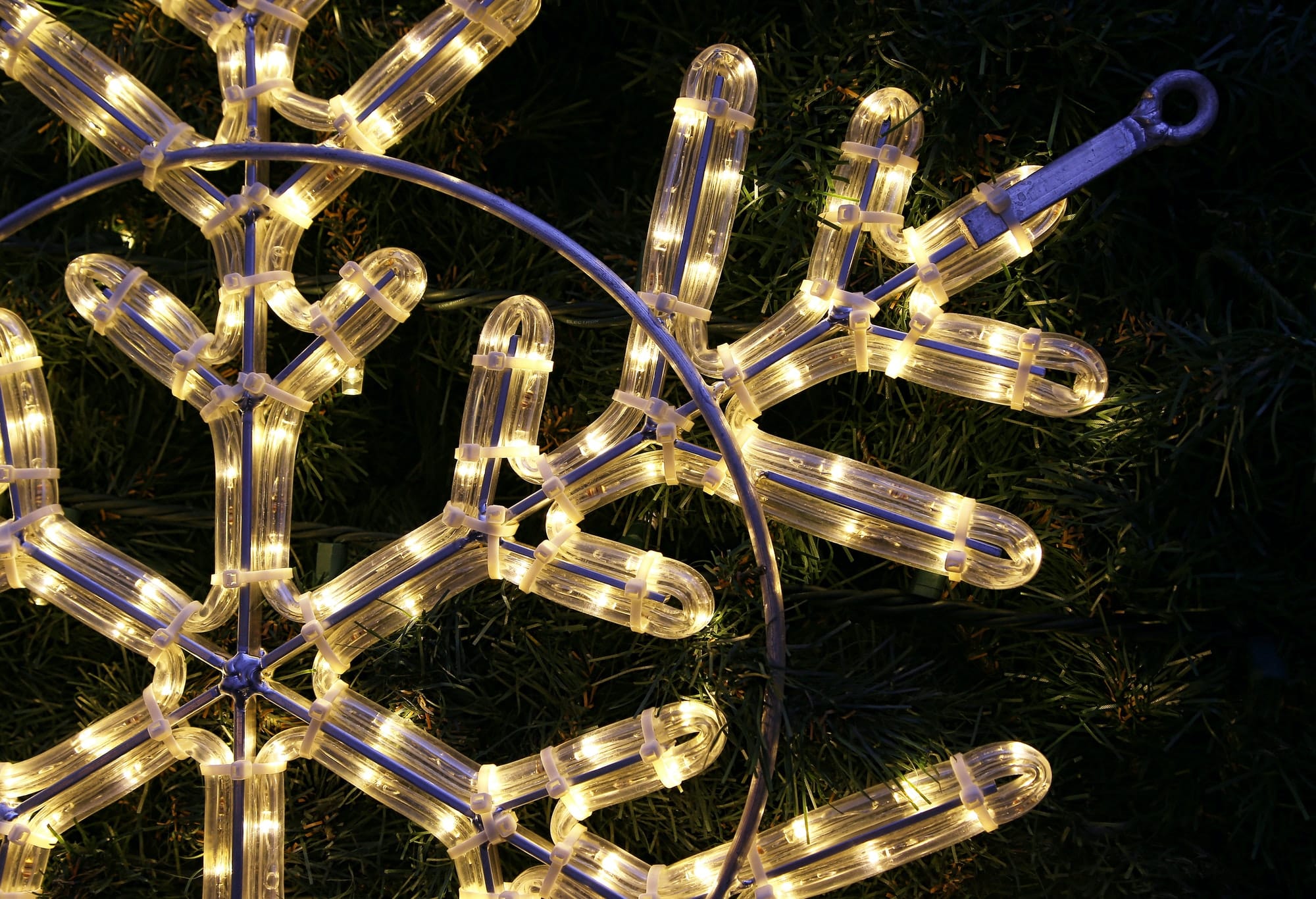As a business owner, I have always strived to find innovative solutions that not only benefit my company, but also the environment. That’s why I’m excited to share with you the world of eco-friendly LED lighting solutions. Just like a beacon guiding ships to safety, LED lighting offers a brilliant path towards sustainability and cost savings for businesses. In this guide, we will explore the various types of LED lighting solutions available, delve into their energy efficiency and cost-saving benefits, and examine their positive environmental impact. Furthermore, we will discuss how to seamlessly implement LED lighting in your business, ensuring its maintenance and longevity. Along the way, we will also showcase real-life case studies of businesses that have successfully embraced LED lighting solutions. So, let’s embark on this illuminating journey together!
Key Takeaways
- LED lighting provides significant energy savings compared to traditional lighting options.
- LED lighting reduces carbon emissions, benefiting the environment.
- Well-lit workspaces with LED lighting contribute to increased employee alertness, focus, and overall well-being.
- LED lights have a longer lifespan, reducing maintenance and replacement costs.
Benefits of LED Lighting for Businesses
One major benefit of LED lighting for businesses is the significant energy savings they provide. LED lighting is highly energy-efficient compared to traditional lighting options. LEDs consume less electricity, converting most of it into light instead of heat, which results in reduced energy consumption and lower electricity bills. This not only benefits the environment by reducing carbon emissions, but it also helps businesses save money in the long run. Additionally, LED lighting has a positive impact on employee productivity. Studies have shown that well-lit workspaces contribute to increased employee alertness, focus, and overall well-being. LED lights provide a brighter, more uniform illumination, enhancing visibility and reducing eye strain. This leads to a more comfortable and productive work environment, improving employee morale and efficiency.
Different Types of LED Lighting Solutions
When it comes to LED lighting solutions, businesses have a variety of options to choose from. One important consideration is whether the LEDs will be used indoors or outdoors, as different types of LEDs are designed for different environments. Additionally, businesses can also explore the option of retrofitting existing fixtures with LED bulbs, which can be a cost-effective way to upgrade their lighting system. Lastly, one of the biggest advantages of LED lighting solutions is their energy savings potential, as they consume significantly less energy compared to traditional lighting options.
Indoor Vs. Outdoor LEDs
While both indoor and outdoor LED lighting solutions offer energy-efficient options for businesses, they differ in terms of their specific applications and functionality. When it comes to choosing the right LED lights for your space, it is important to understand the differences between indoor and outdoor lighting. Indoor LED lights are designed to provide comfortable and focused illumination for indoor spaces such as offices, retail stores, and homes. They are available in a variety of color temperatures and can be dimmable, allowing for customized lighting levels. On the other hand, outdoor LED lights are built to withstand harsh weather conditions and provide bright and even lighting for outdoor areas such as parking lots, streets, and stadiums. They have higher lumen output and are designed to illuminate larger areas. Understanding these differences will help businesses make informed decisions when selecting LED lighting solutions for their specific needs.
Retrofitting Existing Fixtures
To retrofit existing fixtures with LED lighting solutions, I consider the specific types of LED lights that would be most suitable for each space. Retrofitting poses its own set of challenges, but with careful planning and consideration, it can be a cost-effective option for businesses looking to upgrade their lighting systems. Here are four cost-effective options for retrofitting existing fixtures with LED lighting solutions:
-
LED retrofit kits: These kits allow you to replace the existing bulbs and ballasts with LED components, making it a simple and efficient solution.
-
LED tube lights: These are a direct replacement for fluorescent tube lights, offering energy savings and a longer lifespan.
-
LED downlights: These are designed to fit into existing recessed lighting fixtures, providing a sleek and modern look while reducing energy consumption.
-
LED panel lights: These flat and slim lights can be easily installed in drop ceilings, offering a uniform and bright lighting solution.
Energy Savings Potential
Exploring the energy savings potential of different types of LED lighting solutions, I found that each option offers significant reductions in energy consumption. LED lighting is known for its high energy efficiency, making it a cost-effective choice for businesses looking to reduce their energy bills. In addition to the inherent energy efficiency of LED lights, there are also energy efficiency incentives available to businesses that choose to upgrade their lighting systems. These incentives can help offset the cost of implementing LED lighting solutions and further enhance the energy savings potential. Furthermore, smart lighting controls can maximize energy efficiency by allowing businesses to customize and automate their lighting systems based on occupancy, daylight levels, and time of day. By utilizing these features, businesses can optimize their energy usage and achieve even greater energy savings.
Energy Efficiency and Cost Savings
With LED lighting, I can achieve energy efficiency and cost savings for my business. By implementing energy efficient lighting technologies, such as LED bulbs and fixtures, I can significantly reduce my energy consumption and lower my electricity bills. The financial benefits of LED lighting are undeniable. Here are four reasons why LED lighting is a wise investment for my business:
-
Energy savings: LED lights consume significantly less energy compared to traditional lighting options, resulting in lower utility costs.
-
Long lifespan: LED lights have a longer lifespan than traditional bulbs, reducing the need for frequent replacements and maintenance costs.
-
Reduced cooling costs: Unlike traditional lights, LED lights produce less heat, reducing the need for excessive cooling and lowering my cooling expenses.
-
Government incentives: Many governments offer financial incentives and rebates for businesses that switch to energy efficient lighting, further enhancing cost savings.
Investing in LED lighting not only helps me reduce my environmental impact but also provides substantial financial benefits for my business.
Environmental Impact of LED Lighting
Implementing LED lighting solutions not only leads to energy efficiency and cost savings, but it also has a positive environmental impact. LED lights consume significantly less energy compared to traditional lighting options, such as incandescent or fluorescent bulbs. In fact, LED lights use about 75% less energy than incandescent bulbs and 25% less energy than fluorescent lights. This reduction in energy consumption directly translates into lower greenhouse gas emissions and reduced carbon footprint. By adopting LED lighting, businesses can actively contribute to their sustainability efforts and help create a greener future. LED lights also have a longer lifespan, which means fewer resources are needed for replacement and less waste is generated. Overall, LED lighting is a crucial step towards achieving environmental sustainability and reducing our ecological footprint.
Implementing LED Lighting in Your Business
When it comes to implementing LED lighting in my business, there are several key points to consider. First, the benefits of LED lighting are numerous, including energy efficiency, longer lifespan, and improved lighting quality. Second, conducting a cost savings analysis can help determine the potential financial benefits of switching to LED lighting. Finally, proper installation and maintenance are crucial to ensure optimal performance and maximize the longevity of the LED lighting system.
Benefits of LED Lighting
LED lighting offers businesses a multitude of benefits, making it a cost-effective and environmentally friendly choice for lighting solutions. Here are four reasons why implementing LED lighting in your business can be advantageous:
-
Long-term savings: LED lights have a longer lifespan compared to traditional lighting options, reducing maintenance and replacement costs. Additionally, they are energy-efficient, leading to significant savings on electricity bills.
-
Improved productivity: LED lighting provides bright and consistent illumination, which promotes a productive work environment. It reduces eye strain and fatigue, leading to enhanced concentration and efficiency.
-
Environmental impact: LED lights are free from toxic substances like mercury, making them safer for both human health and the environment. They also produce less carbon emissions, contributing to a greener planet.
-
Versatility: LED lights come in various shapes, sizes, and color temperatures, allowing businesses to create customized lighting solutions that meet their specific needs.
Cost Savings Analysis
As a business owner, I conducted a cost savings analysis to evaluate the financial benefits of transitioning to LED lighting in my establishment. The cost analysis revealed that implementing LED lighting resulted in significant savings in energy consumption and maintenance costs. LED lights have a longer lifespan compared to traditional lighting, which reduces the need for frequent replacements and maintenance. Additionally, LED lights are highly energy-efficient, consuming less electricity and lowering utility bills. The return on investment (ROI) was impressive, with the initial investment in LED lighting being recouped in a short period of time. Not only did LED lighting provide cost savings, but it also enhanced the overall lighting quality, creating a more comfortable and productive work environment for my employees. The cost savings analysis clearly demonstrated the financial advantages of transitioning to LED lighting in my business.
Installation and Maintenance
My business’s installation and maintenance of LED lighting was a smooth process that yielded significant benefits. We followed the best practices for installation and encountered minimal issues. Here are some key points to consider when implementing LED lighting in your business:
-
Plan the layout: Before starting the installation, carefully assess the space and plan the placement of LED lights for optimal coverage and energy efficiency.
-
Ensure proper wiring: Make sure to use appropriate wiring methods and follow electrical codes to prevent any safety hazards or malfunctions.
-
Regular maintenance: Schedule routine inspections and cleaning to ensure the longevity and efficiency of your LED lighting system.
-
Troubleshooting common issues: Familiarize yourself with common issues such as flickering lights or dimming problems, and learn how to troubleshoot them effectively.
Maintenance and Longevity of LED Lights
Ensuring the longevity of eco-friendly lighting systems requires regular maintenance and attention to detail. LED light maintenance is crucial for maximizing the durability of LED lights. To maintain the optimal performance of LED lights, it is important to clean them regularly to remove any dust or dirt that may accumulate on the surface. Additionally, checking for any signs of damage or wear and tear is essential. This includes inspecting the wiring, connectors, and fixtures for any loose connections or corrosion. By addressing any issues promptly and conducting routine maintenance, you can extend the lifespan of LED lights and minimize the need for replacements. Taking a proactive approach to LED light maintenance will not only save you money in the long run but also ensure that your eco-friendly lighting system continues to operate efficiently.
Case Studies: Successful LED Lighting Solutions for Businesses
I have conducted several case studies that demonstrate the success of implementing LED lighting solutions in businesses. These case studies highlight the positive impact of LED lighting on various aspects of business operations, such as energy efficiency, cost savings, and employee productivity. Here are some key findings from these case studies:
-
Energy Savings: By replacing traditional lighting fixtures with LED lights, businesses have achieved significant reductions in energy consumption, leading to lower utility bills and a smaller carbon footprint.
-
Cost Reduction: The longer lifespan and lower energy consumption of LED lights result in substantial cost savings over time, as businesses spend less on maintenance and replacement.
-
Improved Lighting Quality: LED lighting provides brighter and more uniform illumination, creating a more pleasant and productive work environment.
-
Enhanced Sustainability: The adoption of LED lighting aligns with businesses’ sustainability goals, showcasing their commitment to environmental responsibility.
These case studies demonstrate the successful implementation of LED lighting solutions in businesses, highlighting the numerous benefits they can reap from this eco-friendly technology.




